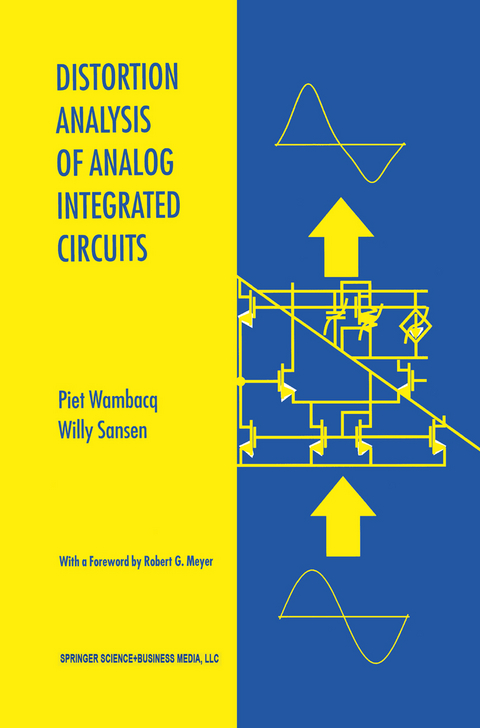
Distortion Analysis of Analog Integrated Circuits
Springer (Verlag)
978-0-7923-8186-0 (ISBN)
1 Introduction.- 2 Basic terminology.- 3 Description of nonlinearities in analog integrated circuits.- 4 Volterra series and their applications to analog integrated circuit design.- 5 Calculation of harmonics and intermodulation products.- 6 Silicon bipolar transistor models for distortion analysis.- 7 MOS transistor models for distortion analysis.- 8 Weakly nonlinear behavior of basic analog building blocks.- 9 Measurements of basic nonlinearities of transistors.- Appendices.- A Useful trigonometric relationships.- B Basics of Volterra series.- B.1 Introduction.- B.2 Volterra series representation of a system.- B.3 Second-order Volterra systems.- B.3.1 The second-order operator.- B.3.2 The second-order Volterra operator.- B.3.3 Second-order kernel symmetrization.- B.4 The second-order kernel transform.- B.4.1 The two-dimensional Fourier and Laplace transform.- B.4.2 Sinusoidal response of a second-order Volterra system.- B.4.3 Response of a second-order system to a sum of two sinusoids.- B.5 Higher-order Volterra systems.- B.5.4 The p-dimensional Laplace and Fourier transforms.- C Derivation of the method for the direct computation of nonlinear responses.- C.1 Setup of basic equations.- C.2 First-order responses.- C.3 Second-order responses.- C.4 Higher-order responses.- D Nonlinearity coefficients for the description of the Early effect.- E Relation between source-referred and bulk-referred nonlinearity coefficients of a MOS transistor.- F Derivatives of the drain current with an implicit saturation voltage.- F.2 First-order derivatives.- F.3 Higher-order derivatives.- G Derivation of the MOS drain current in the presence of velocity saturation.- G.1 Derivation of the drain current with the simple velocity-field models.- G.2 Derivation of the drain current with the more accurate velocity-field model.- G.2.1 The rigorous approach.- G.2.2 Approximate approach.
| Erscheint lt. Verlag | 30.6.1998 |
|---|---|
| Reihe/Serie | The Springer International Series in Engineering and Computer Science ; 451 |
| Zusatzinfo | XXIV, 501 p. |
| Verlagsort | Dordrecht |
| Sprache | englisch |
| Maße | 155 x 235 mm |
| Themenwelt | Mathematik / Informatik ► Informatik ► Theorie / Studium |
| Technik ► Elektrotechnik / Energietechnik | |
| ISBN-10 | 0-7923-8186-6 / 0792381866 |
| ISBN-13 | 978-0-7923-8186-0 / 9780792381860 |
| Zustand | Neuware |
| Haben Sie eine Frage zum Produkt? |
aus dem Bereich


